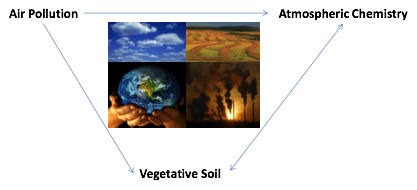Dr. Eran Tas
Soil-plant-atmosphere continuum
Since the pre-industrial period enhanced anthropogenic activity imbalanced the chemical equilibrium between soil, water and plants, via many feedbacks, which are still under study. An extremely sharp rise in the levels of air-pollutants alters the biogeochemical cycles and damages plants and agriculture in many ways, relevant from the local to global scale. On the other hand, vegetation also affects the climate and the composition of the atmosphere in many different ways. Our group focuses on gas exchange between natural and agricultural vegetation and the atmosphere under Mediterranean and semi-arid climate conditions. The interrelationship between vegetation, air-pollution and key processes in the atmosphere are of special interest.
The main focus is on:
i) biogenic volatile organic compounds (BVOCs) emission from vegetation and its impact on local scale ozone destruction and regional ozone formation under Mediterranean and semi-arid conditions
ii) Ozone (O3) uptake by plants and associated effects on both plants functioning and increase in atmospheric carbon dioxide
iii) Impact of methyl halides emissions from natural sources (soil, seawater and plants) on stratospheric and tropospheric ozone destruction.
iv) Evapotranspiration and its forecasting.

To answer these questions we use highly precise and fast sensors to
quantify the concentrations of e.g., BVOCs, O3, CO2 and H2O and quantify
their flux by using the eddy covariance technique and complementary
measurements. Other tools we use include detailed atmospheric chemistry models
(e.g., CAABA-MECCA) and regional models (e.g., WRF and WRF-Chem) in order
to study the implications of the emitted gases on key processes in the
atmosphere. Read more…

Eddy covariance & meteorological measurements

Complementary measurements
This file last modified 02/17/16
